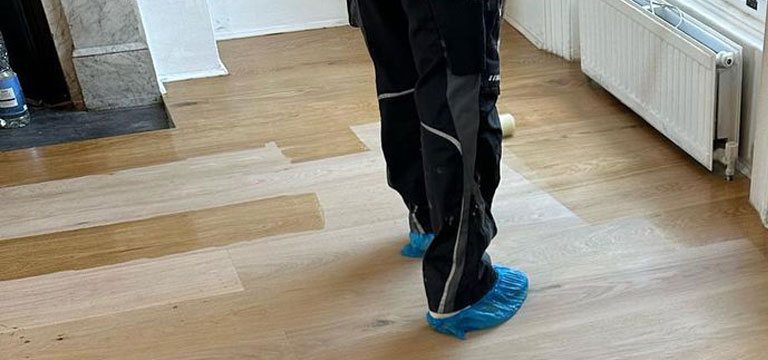Essentially, wood rot is damage to your timber caused by fungi. This will grow if, for example, your wood becomes wet in the rain. And if this happens so often that the timber can’t dry out thoroughly, the rot will just return.
If your wood is in a room such as a bathroom or kitchen, for example, airborne moisture can cause rot. So if you’re looking to prevent rot, proper ventilation is the best way forward. Also, fix cracks in caulk or sealant around windows and doors to stop water from coming into contact with timber.
And this issue doesn’t just look unsightly; it can lead to structural failure. Finally, it’s worth noting that rot is different to mould and mildew, which discolour wood but don’t decay it. (Although these problems can make timber more vulnerable to rot.)
What’s more, brown rot can spread a long way from its original site, even travelling along and through walls and concealing itself behind render and plaster. In these cases, you have a major problem on your hands.
There are many causes of rot, from leaky plumbing or poor drainage to roof damage, neglected decking and bad ventilation. Bear in mind that some timber species will be more prone to this issue than others. Additionally, wood rot can occur anywhere in your home wherever there is damp.
However, the good news is that if you catch rot at an early stage. Equally, repair is straightforward and you won’t necessarily have to replace any timber.
Why repair rather than replace?
In most cases, you can repair rotten wood. And there are a number of advantages when you replace rather than repair. For a start, doing a repair job will save you money; quite often a significant sum.
Equally, it’s more convenient since it’s less disruptive. At the same time, it’s the environmentally friendly choice because it doesn’t involve throwing away any timber needlessly.
However, if you are replacing, when you remove the old, rotten timber, at the same time you should take out up to three inches of sound wood to be sure you have got rid of all the timber affected.
How to treat wood rot
First of all, discover the source of the water causing the rot. Then you can stop it from dampening your wood again.
Next, remove crumbling wood and be sure the whole area is dry. If significant parts come away, you may be looking at replacement. Next, drill small holes into the rotten area, going a little beyond into the healthy wood to stop the rot from spreading. Apply a wood hardener to the timber using a paintbrush.
Then leave it to soak into the wood. Once the hardener has dried out, your timber should be healthy once more. Scrub away any left-over hardener with a wire brush. Use filler to smooth out the repair and complete the job.
Here are some other pointers:
- Brown rot epoxy treatments fill in the gaps in the wood, killing the rot and giving back structural integrity to your timber.
- You can even use commercial anti-freeze to prevent rot from occurring in the first place, and to kill the fungus.
- Some copper compounds, such as copper napthenate, are available as solutions and you can use them to treat this problem, too. Just take out the rotten areas before soaking the surface in the compound to protect against future damage.
Talk to us
If all of this sounds a little complicated, it doesn’t have to be. Royal Stone Care are experts in wood repair, restoration, sanding and polishing in London. If you have a major issue with rotting timber, get in touch. We can help your wood stay looking its glorious best. And we cover homes and businesses, so get in touch today.

